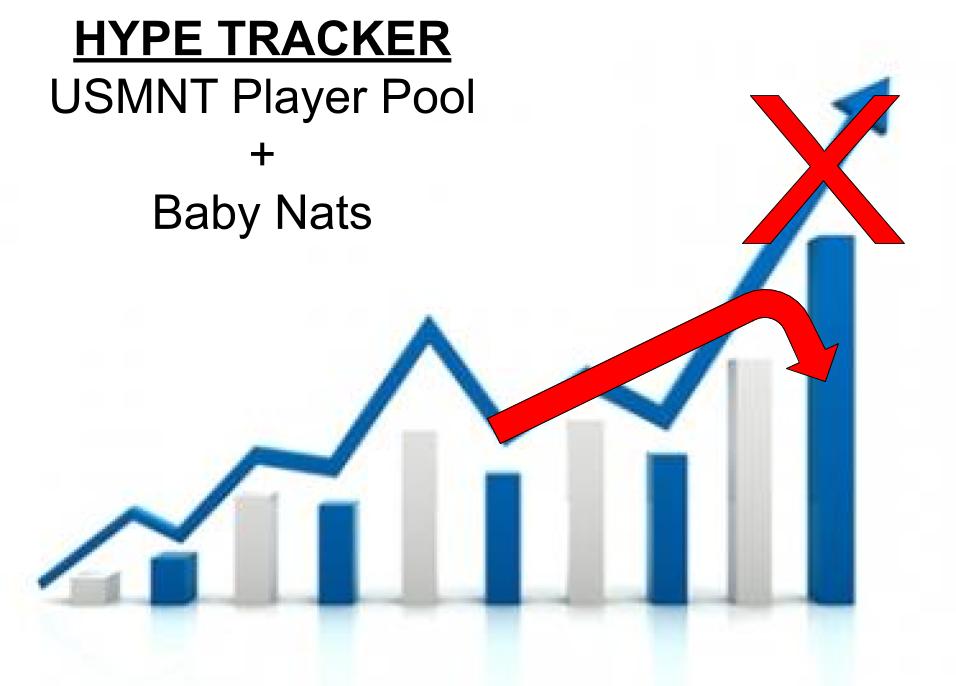Last week I watched and tried to break down the USMNT’s friendly match against Mexico in an attempt to understand what the US was trying to do. It seemed like a good match to study since Berhalter was almost using it as a practice session.
As I was watching, it occurred to me that the second Nations League game against Canada might be another interesting rewatch since the team had made some defensive adjustments for that match.
I started watching at 1/4 speed again and I just couldn’t do it. I’m not sure if I was feeling less into it, if the game was less interesting (I think this was it), or what, but about 40 minutes in I switched to 1/2 speed. I hope you’ll forgive me. 😂
Caveat
I realize that comparing a friendly to a competitive game is not perfect. Who knows how much actual pressure there was, but the US had lost 2-0 to in their prior competitive game and if they had lost this game the team would have been out of the Nations League. I doubt Berhalter’s job would have been in legitimate danger, but there was at least discussion about it.
The Mexico game came on the heels of a “successful” Gold Cup performance. While losing to your biggest rival 3-0 is always going to go over like a lead balloon with fans – it wasn’t going to land him in hot water with Earnie Stewart. He was free to experiment in the Mexico match in a way that he was not against Canada.

One last disclaimer – Canada was abysmal. I’m not sure if they played great or the US played awful in the previous match up, but this was not a good showing from the Canucks. Not to take too much credit away from the USMNT here, but it’s not like they crushed Belgium.
Starting Lineups

Defensive Shape
This was a pretty big change. The US had defended in the 4-2-2-2 shape they’d been using since Berhalter took over (he outlines it here). In this shape, they also didn’t pressure much until the opponent got around midfield. When they did press higher up, they did so in the 4-2-2-2 shape.
In this match the US defended in more of a 4-3-3. Generally, the furthest man from the front three (usually Zardes) would hassle the man with the ball while the furthest midfielder forward (usually Lletget) would try to block off passes into midfield. Look at the difference below in similar situations.


Strategy Out of this Shape
In previous games, Mexico included, the US created very few dangerous turnovers from their opponents. Against Canada they looked to be trying to create these chances. Less than 10 minutes into the game Yueill got this one:


The US was trying to create these turnovers with a quick counter press or by pressuring the receiver. Zardes would lightly pressure the passer (to decrease the quality of the pass), but then the player that received the 2nd or 3rd pass would be put under heavy pressure. If the US could win the ball at this point then they’d already have three or four players in attacking position to get an attack going.



Possible Pressing Trigger?
I noticed something three(?) times in this match. The team would suddenly go forward to press when they were typically happy to use the strategy I just mentioned above. My theory is that the US was targeting the LCB (Doneil Henry and then his sub Derek Cornelius). I think the trigger has something to do with the LCB, but I’m not sure. I’m open to possible explanations @blharreld. Here are the three examples.



Attacking Play
This was also quite different from the Mexico game. In that friendly the US was going to pass their way out of the back or die trying.
Narrator: They died trying.
Against Canada the US was happy to play it long. They tried to play out a couple times, but didn’t push it. Oddly, this lineup was better suited to play possession, but given the circumstances perhaps Berhalter didn’t think it was worth the risk. Adding Ream and Brooks to the back four instead of Zimmerman and Cannon puts a fairly ball-competent back-line out there. Yueill-McKennie-Lletget is also a better possession group than Trapp-Morales-McKennie.


Offensive Strategy
Berhalter has said repeatedly that he wants his team “to disorganize the opponent with the ball.” In this match I’d argue that the strategy was to let Canada disorganize themselves and attack quickly. The US scored in the second minute of this game. Here’s the play that won them the corner:

To me, the attacking play looked much simplified. There were far fewer positional interchanges – it was more win ball and go. The US more or less let Canada have the ball and looked to get forward quickly once they’d won it.


This is not to say that the positional interchanges and attack patterns from September were completely abandoned. They popped up, but infrequently. Here’s an example of Morris and Lletget switching:

In the play shown in the gif below the team has possessed the ball for a little bit and gotten it to Dest near midfield.


Wild Speculation?
Wild Speculation
When Berhalter was hired I theorized that he was creating a system based on a glut of central midfielders and a dearth of fullbacks. Since then right back has turned into possibly the deepest position on the team and left back has a couple promising prospects as well.
What if Berhalter is getting the system changed around to accommodate more of a break up play and get the ball forward fast style of #6? Does that sound like anyone that might be in the pool?
I’m not saying he’s abandoning the positional play thing at all, but given Bradley’s age and injuries plus how good Tyler Adams has become so quickly…adjusting the system to fit the player pool would be an intelligent thing to do. The only game the US has played since then is the January camp game against Costa Rica and I haven’t watched it recently so maybe I’m dead wrong, but it’s definitely something I’ll be checking on.
Or maybe he just wanted to beat a crappy Canada team and get people off his back. Always remember…I might be an idiot. 😂
If you enjoyed this and would like to be informed of future articles type your email address in the box and you’ll be notified of each new post. Also, feel free to follow me on Twitter @blharreld 🤓
A couple random gifs that I liked but didn’t have a place for






“crappy Canadian team” that steamrolled us and should’ve scored 4 or 5. Even the second game they were pressing and dominant the second half and most our goals were errors. With Davies and David looking like future stars and a solid supporting cast I’d be careful about what you say about them